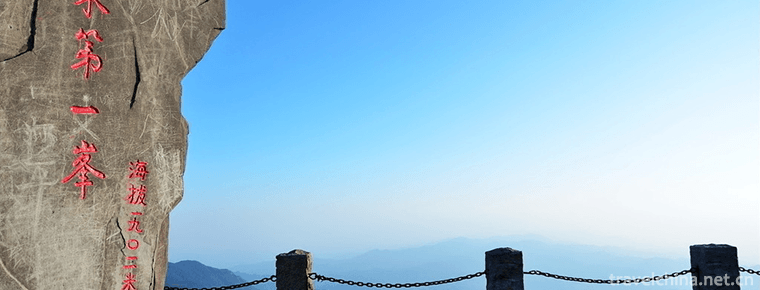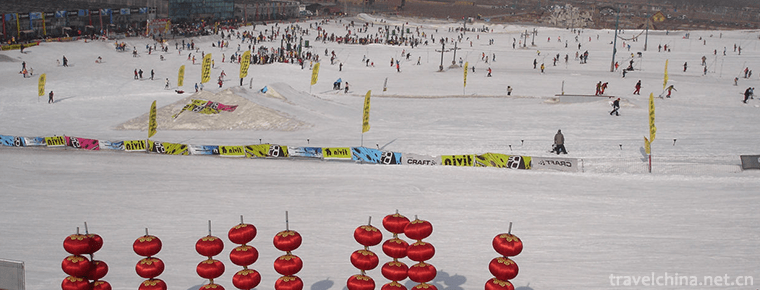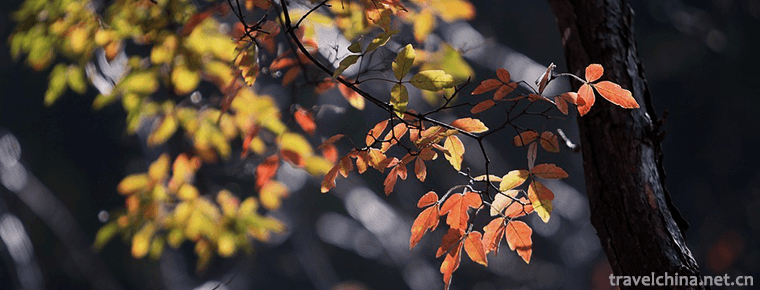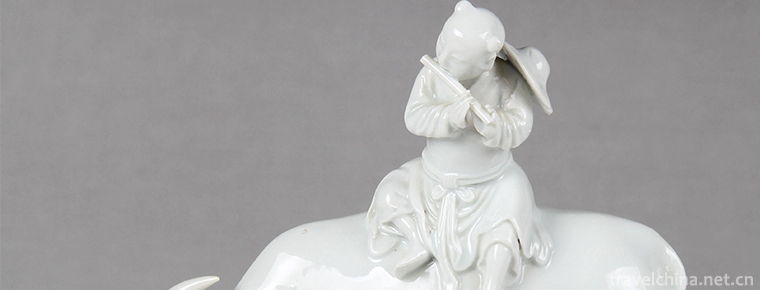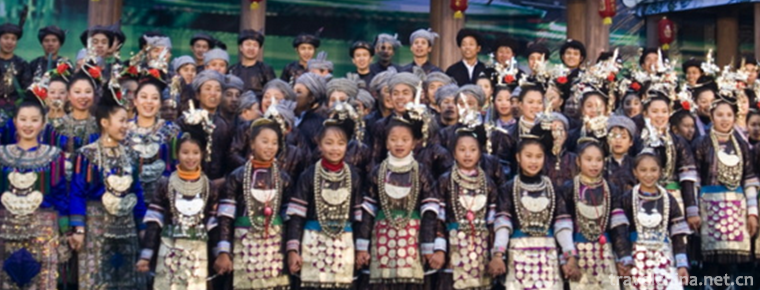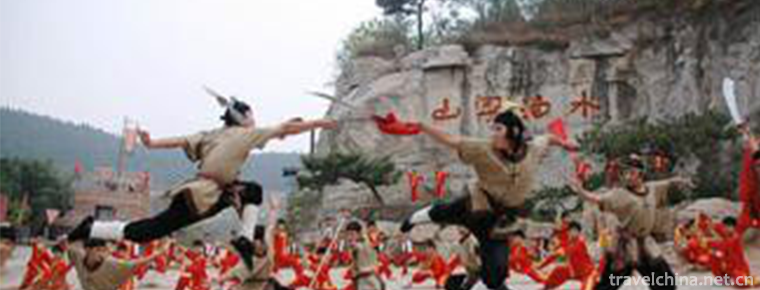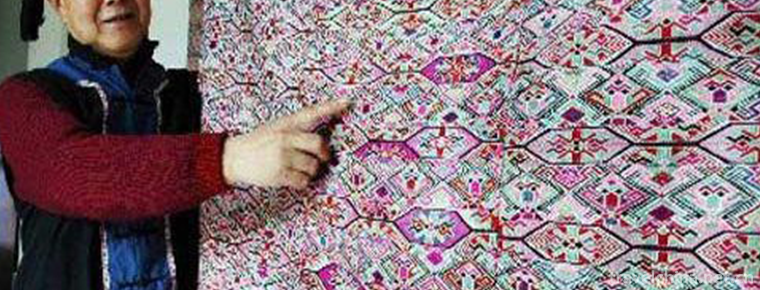Wuyuan County
Wuyuan County, now under the jurisdiction of Shangrao City, Jiangxi Province, is one of the six counties in ancient Huizhou. Located in the northeastern part of Jiangxi Province, it is bordered by Anhui and Zhejiang provinces. Its land area is 2967 square kilometers. Among them, 378,000 mu of woodland and 320,000 mu of arable land are known as "eight-and-a-half hills, one-field, half-waterway and manor". The county has 16 townships (towns), 1 street, 1 Industrial Park and 197 village (residential) committees with a population of 360,000.
Quzhou, a famous historical and cultural city in the east of Wuyuan, Jingdezhen, the porcelain capital in the west, Huangshan, Ancient Huizhou, Shexian, a famous historical and cultural city in the north, and Sanqing Mountain, the first Xianshan Mountain in the south of the Yangtze River and Tongdu Dexing City in the south.
The representative culture of Wuyuan is Hui culture, known as "Book Township" and "Tea Township". It is a well-known cultural and eco-tourism County in China, and is praised as "the most beautiful village in China" by the outside world. In September 2017, it won the title "China's natural oxygen bar".
Orion of the Name
Wuyuan County was named after the headwaters of Wushui in the 28th year of Kaiyuan in Tang Dynasty (740), which analyzed Huiyu Township in Xiuning County and Huaijin Township in Leping County.
Historical evolution
In the Qin Dynasty, in the twenty-sixth year of Qin Shihuang (221 B.C.), there were thirty counties in Xia Zhao County. The northeast part of the county belonged to Shao County, while the southwest part belonged to Jiujiang County.
In the Tang Dynasty, on the eighth day of the first lunar month in the 28th year of Kaiyuan (740), Wuyuan County was set up in Qinghua Town and Lishuzhou. In the first year of Tianfu (901 years), the county government moved from Qinghua town to the town of chord (now Ziyang town).
In the Northern Song Dynasty, Xuan and three years (1121), she changed to Huizhou and Wuyuan was governed by Huizhou.
During the Qing Dynasty, from 1855 to 1864, the Taiping Heavenly Kingdom Rebellion invaded the county territory more than 20 times and occupied the county town 12 times.
On September 4, 1934, in order to facilitate the encirclement and suppression of the Central Red Army, the National Government decided to divide Wuyuan into Jiangxi Province and the Fifth Administrative Region of Jiangxi Province.
On August 16, 1947, the Republic of China returned to Anhui, belonging to the seventh administrative region of Anhui Province.
On May 1, 1949, the Second Field Army of the Chinese People's Liberation Army entered the county town and declared the liberation of Wuyuan County, which belongs to the Northeast Jiangxi Administrative Region of East China and Shangrao City.
In 1984 07, set up Tsinghua town system.
In 1985 04, pearl mountain, Wu Kou, Xiao Lin and Feng Zhou Township were set up.
In February 1993, Qiukou Township, Jiangwan Township, Fuchun Township and Zhongyun Township were abolished, and Qiukou Town, Jiangwan Town, Fuchun Town and Zhongyun Town were established.
In November 1994, Xucun Township, Zhentou Township, Dafang Township and Sikou Township were abolished and Xucun Town, Zhentou Town, Dafang Town and Sikou Town were established.
In 1997 08, the Taibai township was revoked and Taibai town was set up.
In May 1999, Wukou Township was abolished, and Shangmeizhou Village Committee of Meilin Township and Donglingwu Village Committee of Weixi Township were assigned to Ziyang Township.
In December 2001, Weixi Township was abolished, Xikeng Administrative Village was assigned to Ziyang Township, Yangxi and Shankeng Administrative Village to Meilin Township, Xiaolin Township to Zhongyun Township, Xiaoge Township to Jiangwan Township.
In the 08 month of 2003, the village of Renshan was renamed "Da Shan Shan".
In 2003 09, the high Sha township was revoked, and the construction system was under the jurisdiction of Ziyang town.
In October 2003, Meilin Township was abolished, and the built-up system was under the jurisdiction of Ziyang Town; Dali Town was abolished, and Jiangwan Town was under the jurisdiction of the built-up system.
In March 2005, Jiangxi Provincial Civil Affairs Department "On the Approval to the Withdrawal of Towns and Towns in Wuyuan County": agreed to revoke Longshan Township in Wuyuan County, and the built-up system was under the jurisdiction of Zhongyun Town; revoked Fengzhou Township, and the built-up system was under the jurisdiction of Xu Town.
In January 2006, Jialu Township was abolished, and the built-up system was under the jurisdiction of Fuchun Township; Gutan Township was abolished and Dazhaoshan Township was under the jurisdiction of the built-up system.
In 2007 06, the Industrial Park Management Committee was established.
In July 2008, Weicheng Street was set up. It consists of seven communities, namely, garden area, Hanchun, Wenbo, pre-Confucianism, Weicheng, Wengong and Tianyou, and four administrative villages, Xiangtan, Donglingwu, Shangmeizhou and Chengguan.
Geomorphology
Located in the hilly area of Northeast Jiangxi, the upper reaches of the Le An river. Mountains and hills account for 83% of the total area. The terrain inclined from northeast to southwest.
Climatic characteristics
Located in the middle subtropical zone, the county has the characteristics of East Asian monsoon region, mild climate, abundant rainfall, short frost period and distinct seasons.
The annual average temperature was 16.8 C, the highest in 1998 and 2006 was 17.9 C, and the lowest in 1965, 1976 and 1980 was 16.3 C. The hottest month July, the average monthly temperature is 28 degrees. The extreme maximum temperature was 41.0 C, which appeared on August 28, 1967, and the extreme minimum temperature was - 11.0 C, which appeared on January 16, 1967.
The annual total precipitation averaged 1962.3 mm, of which the precipitation in January-June showed an increasing trend and that in July-December showed a decreasing trend. The first half accounted for 69% of the precipitation in 2011, and April-June was an obvious rainy season, which was called flood season. The average monthly precipitation was over 200-300 mm, accounting for 47.9% of the precipitation in 2011. The maximum annual rainfall of 3036.8 millimetres occurred in 1998. The maximum monthly rainfall of 970.4 millimetres appeared in July 1998. The distribution of rainfall is more than four weeks and less in the northeast.
Hills in the territory fluctuate and move in different directions. Because of more clouds, rainy days, high mountains, shade trees, the sunshine hours vary greatly from place to place. Southwest township is more than Northeast township, plain hills are more than mountainous areas. In 2011, the available hours were 4425.9 hours (4437.0 hours in leap year), while only 1715.1 hours, accounting for 39% of the available hours.
The annual dominant wind direction is the northeasterly wind with an average wind speed of 1.5 m/s; the extreme maximum instantaneous wind speed is over 40 m/s, which appeared on August 13, 1965 and August 19, 1978.
Wuyuan Hui opera is an ancient local opera. During the reign of Qianlong in the Qing Dynasty, Hui classes such as "Qingsheng", "Caiqing", "Tongqing", "Dayangchun" performed in Wuyuan successively. In the third year of Jiaqing (1798), when Cao Zhenyong, a scholar of Wuyingdian University, returned home to worship his ancestors, he changed the Hualian Opera Troupe founded by his father Cao Wendi into the Qingsheng Opera Troupe and brought the troupe back to Xiaoyong, Wuyuan. Since then, more than 20 Huizhou Opera Clubs have performed in Wuyuan successively. Among them, the more famous ones are the "Qingsheng", "Yangchun", "Tongqing" and "Caiqing" Huizhou Classes, known as the "Four Huizhou Classes outside Beijing".
At the same time, many Huizhou classes have been set up in Wuyuan, and they have developed outward with their own characteristics and toured around. During the Guangxu period, Wang Wangjin of Zhongyun Village in Wuyuan set up the "Hong Fulin Class", with Wuyuan people as the main actors, performing in southern Anhui, Jiangxi and adjacent areas of Zhejiang. In addition, "Ziwu Class", "Xian Stage", "Wang Hefu", "Xinyangchun", "Xinhongchun" and other classes have performed and expanded in Anhui, Jiangxi and Zhejiang.
In the 1940s, owing to the decline of rural economy, Huiban in Wuyuan countryside was disbanded successively. Some Huiban artists organized a series of classes, some changed to farming, and some performed in leisure festivals.
After the founding of New China in 1956, Wuyuan Hui Opera Troupe was re-established. After rescue, excavation and reorganization, Wuyuan Hui Opera was reborn. In 1958, Wuyuan Hui Opera Troupe participated in the Jiangxi Provincial Theatre Festival with traditional Hui Opera "Seven Military Forces under Water", "Jinde Mountain Naihu", "Hujiazhuang" and "Hundred Flowers Giving Swords". In 1959, he also participated in the performance of the ancient Hui opera Fenhe Bay in Beijing, which was highly valued and praised by experts and scholars.
In 2006, Wuyuan Hui opera was listed as the first batch of national intangible cultural heritage list.
Nuo dance is a dance performed in the ancient times when the ceremony of "expelling evil spirits and spreading diseases" was performed. It originated from the primitive witch dance. Confucius recorded in The Analects of Confucius that "the countrymen nuo, the court clothes and standing on the Pei steps". Wuyuan Nuo dance, commonly known as "ghost dance" or "dance ghost", is also known as "dance ghost drama". In ancient times, people worshipped and revered their ancestors with Nuo Dance. People believed that performing Nuo Dance could protect their villages and make their families safe, fruitful and prosperous. Nuo dance is performed in Wuyuan every year during the Spring Festival and important festivals. Wuyuan Nuo Dance is mainly distributed in Hangtou Village, Zhentou Town, Youshan Village, Fenshui Village, Qiukou Town, Changjie Village, Likeng Village, Jinzhukeng Village, Jiangwan Town, Jiangwan Township, Gushu Village, Sumukeng Village, Duanju Township, Qingyuan Village, Tuochuan Township, Likeng Village and Xitou Village. Among them, Qiukou Changjie Village and Duan Xinxiang Qingyuan Village have the richest programs, the most wonderful performances and relatively complete reservations.
Wuyuan Nuo Dance not only spreads widely, but also shows quite rich content. According to the survey, there are more than 10 Nuo classes, more than 100 programs and more than 60 programs with different names. Among them, there are not only the original performance of "Chasing the Fighter" and "Chasing the King", but also the "Opening up Heaven and Earth" and "Sun", which reflect myths and folklores. "Shooting the Moon", "Meng Jiangnu Sending Cold Clothes", "Liu Hai Playing Golden Bug", "Prime Minister Cavalry", "Guan Gong Grinding Dao", "Dancing Crane" and "Two Monkeys Catching Lies" simulating animal habits, as well as "Single Stick", "Two Sticks", "Dancing Little Devil" and "Farming the Field" imitating farming and hunting movements. "Catching birds" and so on.
Wuyuan Nuo dance went to Beijing to attend the first national folk music and dance festival in 1953. Since 1986, Wuyuan Nuo Dance materials have been included in the monographs of "Integration of Chinese Folk Dance Jiangxi Volume", "Chinese Dance Chronicle Jiangxi Volume" and "Mumian Opera of Chinese Han Nationality" published by Japanese Muer Society. In 2005, Nuo Dance Programs "Chasing the King", "Meng Jiangnu Sending Cold Clothes" and "Prime Minister Exercise" participated in "China Jiangxi International Nuo Culture and Art Week" and won "Golden Award" and "Excellent Performance Award" respectively. In 2006, Wuyuan Nuo Dance was listed in the first batch of national intangible cultural heritage projects.
By the end of 2015, Wuyuan has one AAAAA-level tourist attraction and 12 4A-level tourist attractions. It is the largest 4A-level tourist attraction in the country and the only national AAA-level tourist attraction named after the whole county.
On January 17, 2013, Wuyuan Jiangwan Scenic Spot was awarded "National AAAAA Class Tourist Spot" by the National Tourism Administration and successfully established the National AAAAA Class Tourist Spot. Meanwhile, the Wuyuan National Rural Tourism Holiday experimentation area was officially unveiled.
Located in the mountainous area of the south of the Yangtze River, the village of Zheling in Wuyuan is built on the hill because of "no three feet flat" in the village. The houses of the villagers are distributed in a stepped fan. The limitations of natural conditions stimulated the imagination and creativity of the ancestors. Every summer and autumn, the front and back of the house became a world of bamboo plaques, with long wooden frames holding round plaques, spring bracken vegetables, water shoots, summer pumpkin, beans, autumn rice, chili peppers, etc. The colorful crops, which set off the ancient pink walls and tiles of Hui school, paint the unique "sunning autumn" agricultural landscape in the world. Mountain dwellers have deep emotions about autumn sun, which has formed a folk cultural phenomenon, a cultural symbol, representing a social life style. Therefore, Wuyuan Ling Ling is also named "the most beautiful Chinese symbol" by the Ministry of culture.
As an outstanding tourist in Wuyuan, the Zongling Scenic Area attaches great importance to the cooperation with the film and television circles, and cooperates with the Beijing Film Academy to establish the "Beiyingyiyi Station", which has successively become the filming base of the first micro-film festival in Jiangxi, the scenic spots of the films "Escape Garden", "Nine-day Xuanbirds", "Left Roller" and "Ode to Joy 2". The Ling Ling scenic area is bound to become the most cultural and artistic village in China.















-
Old Beijing fried Morchella
The most famous famous food in Beijing is old Beijing tripe and Beijing roast duck. As for the oldest and most prosperous snacks in Beijing, belly burst is definitely the best among them..
Views: 162 Time 2018-10-27 -
Yin and yang
There are three characteristics of yin yang philosophy: unity, opposition and interaction. In thinking, it is an inseparable node of arithmetic and divination..
Views: 368 Time 2018-11-13 -
Baishuiyang Yuanyangxi Tourist Area
Baishuiyang Mandarin Creek is located in Pingnan County, Ningde City, Fujian Province. It is 170 kilometers away from Fuzhou and 101 kilometers away from Ningde.
Views: 170 Time 2018-12-08 -
Guangdong First Peak Tourist Scenic Spot
Guangdong First Peak Tourist Scenic Area is the largest oasis on the Tropic of Cancer. It has a large area of primitive forests, stable forest ecosystem, dense evergreen broad-leaved forests.
Views: 126 Time 2019-01-13 -
Lianhuashan Ski Resort
Located in Zhangzhen, Shunyi District, Beijing, Lianhuashan Skiing Ground covers an area of more than 1 million square meters and was opened on December 19, 2003..
Views: 202 Time 2019-01-29 -
Songxian Tianchishan National Forest Park
The Tianchishan National Forest Park in Songxian County, Luoyang City, is located in Xionger Mountains, northwest of Songxian County, Luoyang City, with a total area of 1716 hectares and a forest cove.
Views: 133 Time 2019-02-13 -
Weihai Tianmu Hot Spring Resort
Tianmu Hot Spring Resort Project invested 600 million yuan by Zhuhai Tianmu Group. A total of 35,000 square meters were opened in September 2008..
Views: 80 Time 2019-02-22 -
Legend of Boya Period
"When the evidence of the legendary place of Bo Yazi Period was found in Hanyang, I knew that it was hopeful to apply for the national level!" Yesterday, the reporter learned from the Provin.
Views: 210 Time 2019-04-04 -
Sintering Techniques of Dehua Porcelain
Dehua ceramic firing technology is a traditional handicraft in Dehua, Fujian Province. Dehua ceramic production began in the Neolithic Age, flourished in the Tang and Song Dynasties.
Views: 159 Time 2019-04-26 -
the Dong chorus
Originated in the Spring and Autumn Period and the Warring States Period, the Dong Grand Song has a history of more than 2500 years. It is a folk chorus form with multi-voice.
Views: 165 Time 2019-04-27 -
Liangshan Wushu
Liangshan is the hometown of the heroic stories of the Marsh, the place where the heroes of the Marsh flocked together and opposed oppression and exploitation in past dynasties. At the same time, it i.
Views: 90 Time 2019-05-13 -
Brocade Weaving Skills of Tujia Nationality
Tujia brocade weaving process is complex, in weaving, using the ancient pure wooden waist inclined loom weaving, through spinning and twisting, dyeing, inverting, drawing, reed loading, rolling, picki.
Views: 114 Time 2019-06-23



